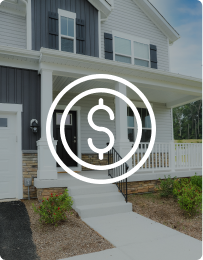Put your property value to work
Whether you’re lowering mortgage costs or investing to get ahead, Perch guides you through thousands of financing options—fast.

What is a refinance?
To refinance, you are breaking your existing mortgage for new borrowing terms. You can get a better mortgage rate, lower monthly payments or access cash. It offers a lower cost of financing compared to other borrowing options, such as a credit card or line of credit.

What is a refinance?
To refinance, you are breaking your existing mortgage for new borrowing terms. You can get a better mortgage rate, lower monthly payments or access cash. It offers a lower cost of financing compared to other borrowing options, such as a credit card or line of credit.
Tap into your property value to get ahead
Avoid hidden fees and the high cost of borrowing. Unlock the value of your property with Perch and take control of your financial future.
- Review thousands of mortgage options in seconds
- Minimize lender penalty fees
- See your new mortgage payment before committing

We'll do all the
hard work for you
When you work with Perch, we’ll get you the lowest rate available on renewal so you can save on your mortgage.
How to refinance your mortgage
01
Sign up to Perch

02
Add your property details

03
Start a refinance plan and a dedicated mortgage advisor will review your application to get you pre-approved



- who: Homeowners
- real estate goals: Vacation home in Mexico
- issues: Accessing equity
Today’s best
mortgage rates
5-year variable
Refinance: 6.35%
5-year fixed
Refinance: 5.94%
Calculators and tools:
Refinance FAQs
How does refinancing my mortgage work?
Refinancing is when you pay off your existing mortgage and replace it with a new mortgage. The new refinanced mortgage may have a larger balance, with a different rate, term and/or amortization. You can opt for a shorter amortization as long as your income and affordability permits it. The maximum length your amortization can be is 30 years.
It’s important to note that your ability to refinance will be limited to the built-up equity in your home. You can build equity by paying down your primary mortgage. The more you pay off your principal balance, the more equity you’ll have. You will also build equity if your property value increases. Lenders will typically lend up to 80% of your current property value.
Why should I consider refinancing my mortgage?
Can I refinance to lower my mortgage payments?
If cash flow is an issue, you may want to consider lowering your mortgage payment to live with more financial flexibility. Keep in mind that this doesn’t mean you’re saving money in the long run. You’ll end up paying more interest over time.
If your mortgage is $320,000 at 3% over a 25 year amortization period, your monthly payments would be $1,514. Let’s assume rates don’t change, and ten years have passed. Your payments would still be $1,514, even though the balance of your mortgage has dropped to $260,000. You could refinance into a 30-year amortization mortgage and your monthly mortgage payment would drop to $1,094. That’s an extra $420 in your pocket each month.
Looking for more answers? See all FAQs →


